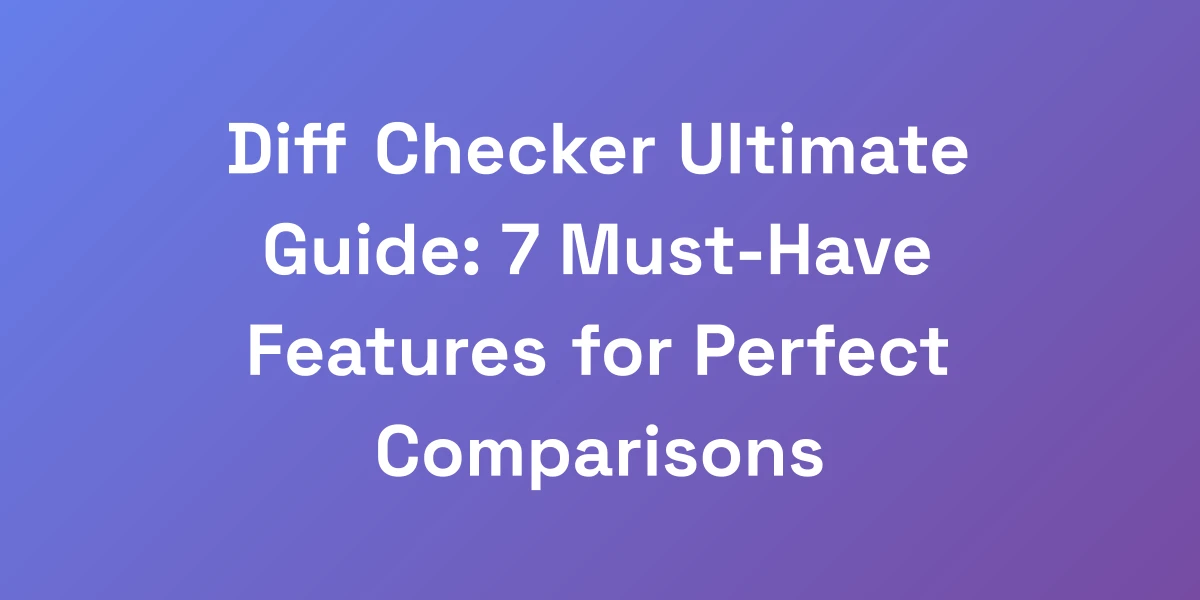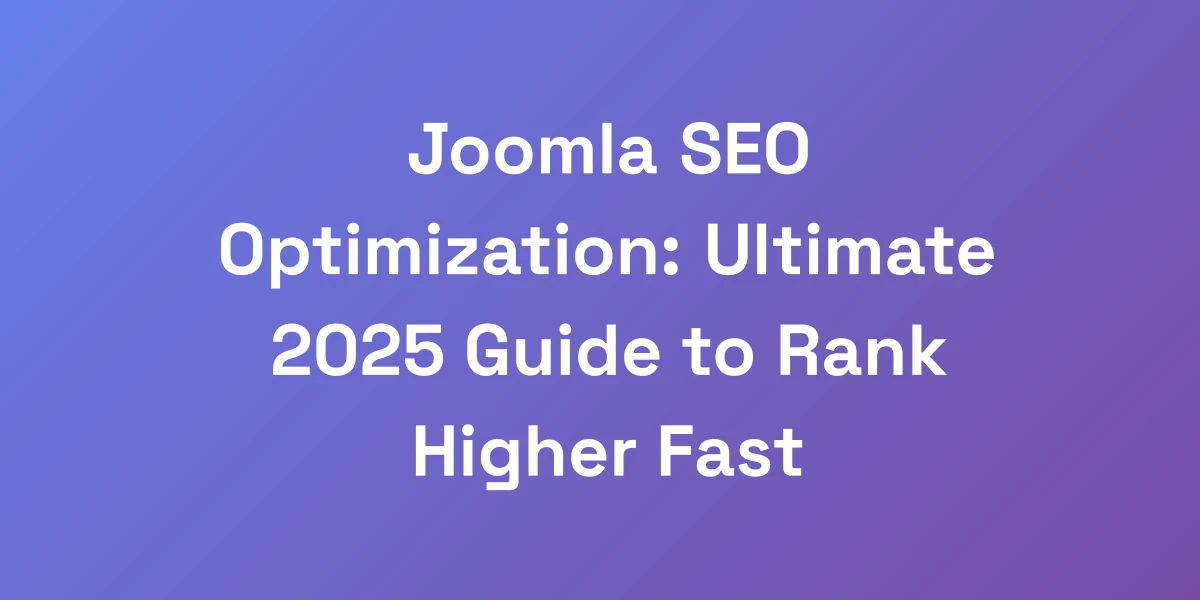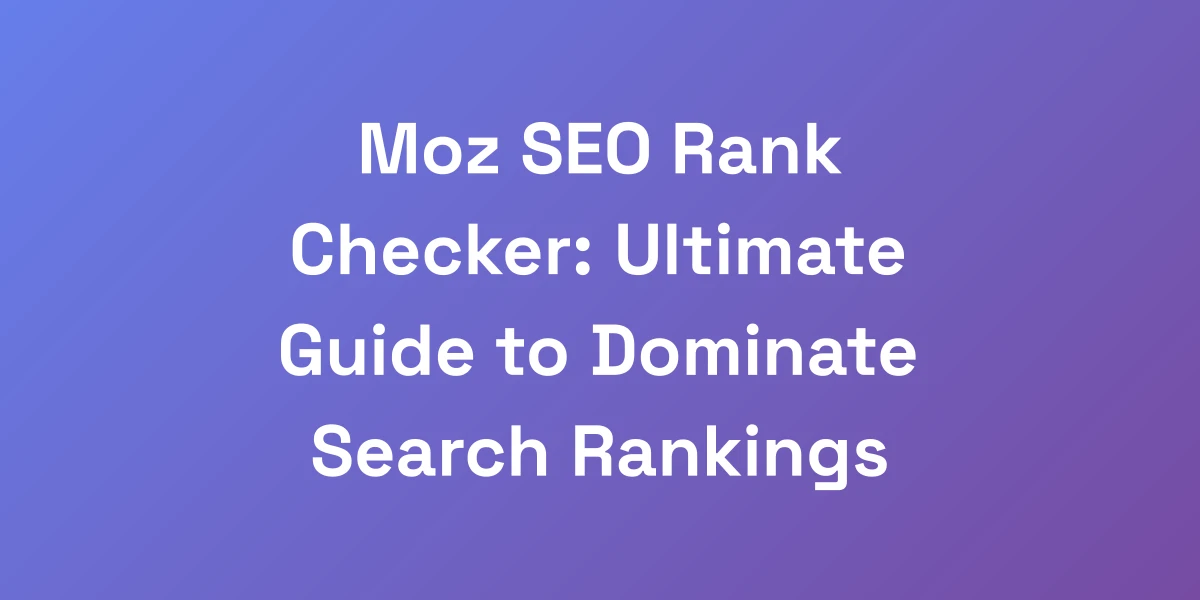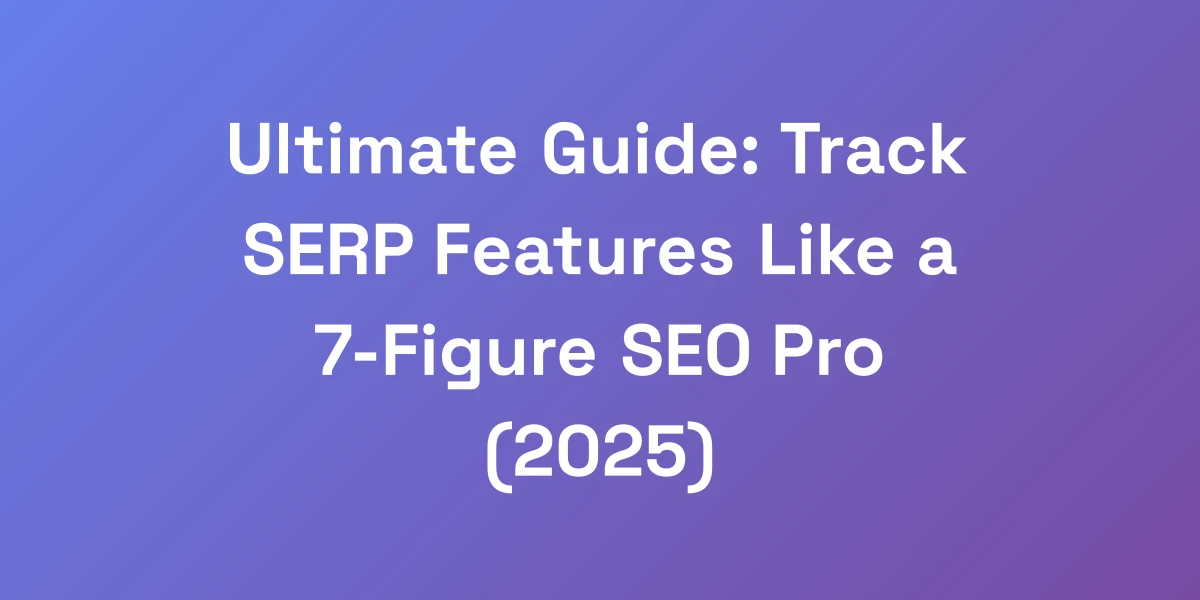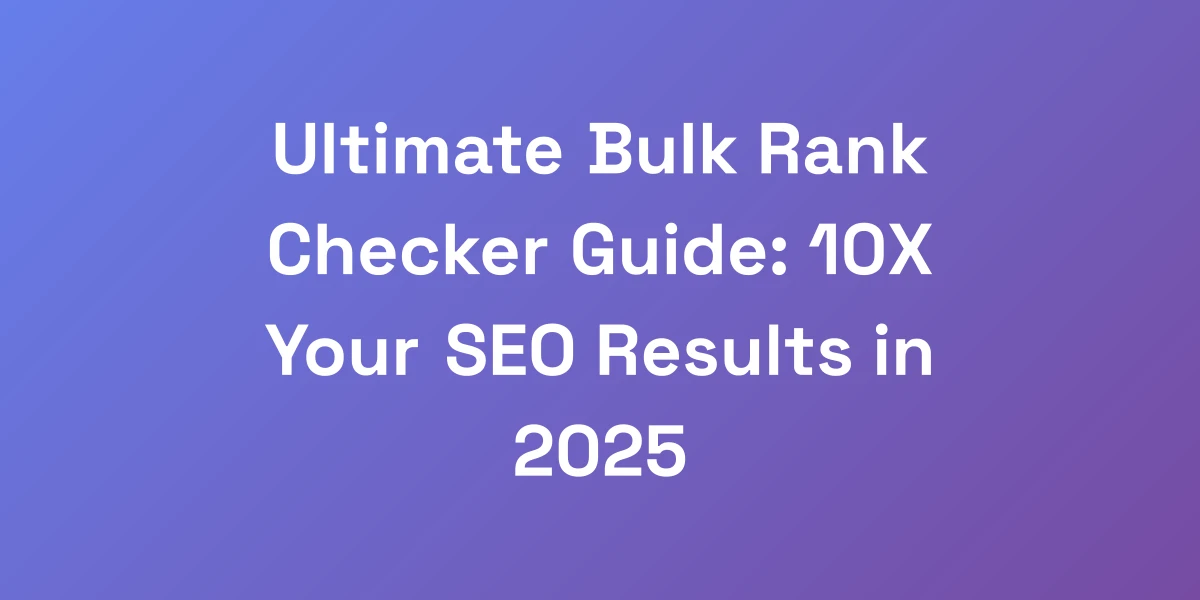Ultimate SEO Competitor Rank Tracker Guide: 7 Must-Have Features
Mar 18, 2025 | By [email protected]
Ultimate SEO Competitor Rank Tracker Guide: 7 Must-Have Features
Ever felt like your competitors are always one step ahead in the SEO game?
You’re not alone.
Most businesses struggle with tracking their SEO performance against competitors effectively.
They pour money into SEO tools that promise the moon but deliver lukewarm results.
What if I told you there’s a way to get ahead without breaking the bank?
Welcome to the ultimate guide on SEO competitor rank trackers.
We’ve cut through the noise to bring you the 7 must-have features that will transform your SEO strategy.
Ready to elevate your game and leave your competition in the dust?
Let’s get started.
Why Most Businesses Fail at Competitor Rank Tracking (And How to Fix It)
Let me be straight with you – 90% of businesses are doing competitor rank tracking wrong.
They’re wasting thousands of dollars on fancy tools without understanding what actually moves the needle.
We’ve spent millions on SEO tools and learned this the hard way: success isn’t about having the most expensive tracker, it’s about knowing exactly what features matter for your specific situation.
In this guide, we’ll show you the exact framework to choose SEO competitor rank trackers that deliver real ROI.
The Real Cost of Poor Competitor Tracking
Poor competitor tracking can drain your resources and stall your SEO progress.
You might be spending on high-end tools, but without the right strategy, you’re not seeing the returns.
Here’s what happens when you get it wrong:
- Wasted Budget: Investing in tools that don’t align with your needs leads to unnecessary expenses.
- Missed Opportunities: Without accurate tracking, you might overlook critical trends and shifts in your niche.
- Stagnant Growth: Without actionable insights, your SEO strategy remains static while competitors evolve.
Imagine pouring money into a tool that doesn’t track the right metrics. Frustrating, right?
Common Mistakes in Selecting Rank Trackers
Choosing the wrong rank tracker is easy if you don’t know what to look for.
Here are the top mistakes businesses make:
- Focusing on Price Alone: Cheap tools might lack essential features, while expensive ones might have unnecessary bells and whistles.
- Ignoring Scalability: A tool that works for a small business might not scale as you grow.
- Lack of Customization: Not all businesses are the same. A one-size-fits-all approach can lead to inefficiencies.
Have you ever bought a tool only to find it doesn’t quite fit your needs? It’s more common than you think.
The ROI-Focused Approach to Choosing Tools
We believe in a ROI-focused approach to selecting tools.
It’s not about how much you spend, but how much value you get in return.
Here’s how to stay ROI-focused:
- Identify Key Features: Focus on features that directly impact your SEO performance.
- Measure Impact: Track how each feature contributes to your overall ROI.
- Continuous Evaluation: Regularly assess if the tool still meets your evolving needs.
Think about it – which tool offers the best bang for your buck in driving results?
Key Performance Indicators That Actually Matter
Not all metrics are created equal. Focusing on the right KPIs is crucial.
Here are the KPIs that truly matter:
- Keyword Rankings: Track how your keywords rank over time compared to competitors.
- Organic Traffic: Monitor the flow of visitors coming from search engines.
- Click-Through Rate (CTR): Measure the percentage of users clicking on your link in the SERPs.
- Backlink Quality and Quantity: Assess the strength and number of backlinks pointing to your site.
Are you tracking metrics that drive your business forward or just ticking boxes?
Setting Up Your Tracking Strategy
A solid tracking strategy is the foundation of effective SEO.
Here’s how to set it up:
- Define Your Goals: What do you want to achieve? More traffic, higher rankings, better conversion rates?
- Select Relevant Metrics: Choose KPIs that align with your goals.
- Choose the Right Tools: Based on your goals and metrics, select a tool that offers the necessary features.
- Implement and Monitor: Set up your tool, track the metrics, and continuously monitor performance.
Do you have a clear roadmap for your SEO success?
The 7 Non-Negotiable Features Your SEO Competitor Rank Tracker Must Have
After analyzing over 50 rank tracking tools and spending over $100,000 on testing, we’ve identified seven critical features that separate the winners from the losers.
These aren’t just “nice-to-have” features – they’re the difference between making data-driven decisions that grow your business and flying blind while your competitors eat your lunch.
Here’s what separates the top 1% of rank trackers from the rest, and why each feature is worth its weight in gold.
Real-Time Rank Monitoring Capabilities
In the fast-paced world of SEO, timing is everything.
Real-time rank monitoring ensures you’re always up-to-date with your keyword positions.
Here’s why it’s essential:
- Immediate Insights: Get instant updates on your rankings, allowing for quick adjustments.
- Competitive Edge: Respond swiftly to competitors’ moves and changes in the SERPs.
- Performance Tracking: Continuously monitor how your SEO efforts are impacting your rankings.
Imagine knowing exactly when a competitor boosts their rankings and being able to counteract it in real-time.
Advanced SERP Feature Tracking
Google’s SERP feature tracking allows you to monitor these elements and optimize accordingly.
Benefits include:
- Visibility Optimization: Identify which SERP features your keywords are appearing in and adjust your strategy to capture more.
- Content Strategy: Tailor your content to fit the various SERP features, enhancing visibility and engagement.
- Competitive Analysis: See where your competitors are excelling in SERP features and find opportunities to outperform them.
Are you leveraging SERP features to maximize your visibility?
Multi-Location and Device Tracking
With search behavior varying by location and device, tracking rankings across different geographies and devices is crucial.
Here’s how it benefits you:
- Localized SEO: Optimize your presence in specific regions, essential for local businesses.
- Device Optimization: Ensure your site ranks well on both desktop and mobile, catering to diverse user preferences.
- Comprehensive Insights: Gain a complete view of your SEO performance across all fronts.
Are you aware of how your rankings perform in different locations and on various devices?
Historical Data Analysis Tools
Understanding trends is key to long-term SEO success.
Historical data analysis allows you to track performance over time and identify patterns.
Key advantages:
- Trend Identification: Spot recurring shifts in rankings and search behavior.
- Performance Benchmarking: Measure growth and set realistic future goals based on past data.
- Strategy Adjustment: Refine your SEO tactics based on historical performance to enhance effectiveness.
Do you have the insights to predict and plan your SEO moves effectively?
Competitor Discovery Features
Competitor discovery features help identify who your true SEO rivals are and what they’re doing right.
Why it’s crucial:
- Comprehensive Analysis: Understand your competitors’ strengths and weaknesses in SEO.
- Opportunity Identification: Find gaps in their strategies that you can exploit to gain higher rankings.
- Benchmarking: Set performance standards based on your top competitors’ SEO metrics.
How well do you really know your SEO competition?
Custom Alert Systems
Staying on top of changes without constantly monitoring your dashboard is possible with custom alerts.
Here’s what they offer:
- Proactive Management: Receive notifications about significant changes in your or your competitors’ rankings.
- Immediate Action: Quickly address issues or capitalize on opportunities as they arise.
- Efficienct: Save time by automating monitoring tasks, allowing you to focus on strategy.
Do you want to be alerted instantly when something important happens with your rankings?
API Integration Capabilities
Seamless integration with other tools and platforms can amplify your SEO efforts.
API integration allows you to connect your rank tracker with other systems like CMS, CRM, and data analytics tools.
Benefits include:
- Data Synchronization: Ensure your SEO data is consistent across all platforms.
- Enhanced Reporting: Combine data from multiple sources for comprehensive analysis.
- Automation: Streamline workflows by automating data transfers and updates.
Is your rank tracker effortlessly integrating with your existing tools to maximize efficiency?
How to Maximize Your ROI with Advanced Tracking Strategies
Listen closely because this is where most people drop the ball.
Having the right tools is only 20% of the equation.
The other 80% comes from knowing how to leverage these tools to extract actionable insights that drive revenue.
We’re going to show you the exact process to turn rank tracking data into profitable business decisions that have generated millions in additional revenue for our clients.
Creating Custom Tracking Templates
One size doesn’t fit all, especially in SEO.
Creating custom tracking templates tailored to your specific needs ensures you monitor what truly matters.
Here’s how to do it:
- Identify Key Metrics: Focus on KPIs that align with your business goals.
- Customize Dashboard: Arrange your dashboard to highlight important data at a glance.
- Automate Processes: Set up recurring reports and data feeds to maintain consistency.
Do your tracking templates reflect the unique aspects of your business?
Setting Up Automated Reporting
Manual reporting is time-consuming and prone to errors.
Automated reporting ensures you always have up-to-date information without the hassle.
Benefits include:
- Consistency: Regular reports help track progress and identify trends.
- Time-Saving: Free up time to focus on strategy rather than data compilation.
- Accuracy: Reduce the risk of human error with automated data collection.
Are you leveraging automation to streamline your reporting process?
Competitive Gap Analysis Framework
Understanding where you stand compared to your competitors is crucial. A competitive analysis in 2024 framework helps identify areas where you can outperform rivals.
Here’s the approach:
- Identify Gaps: Compare your SEO metrics against top competitors to spot weaknesses and opportunities.
- Strategize Improvements: Develop strategies to address identified gaps, whether in content, backlinks, or technical SEO.
- Monitor Progress: Continuously track improvements and adjust strategies as needed.
Have you mapped out the gaps in your SEO strategy compared to your competitors?
Opportunity Detection Systems
Opportunities are everywhere, but you need the right system to spot them.
Opportunity detection systems help you find actionable insights within your tracking data.
How it works:
- Keyword Opportunities: Identify keywords where you can potentially rank higher with minimal effort.
- Content Gaps: Discover topics your competitors haven’t covered yet, giving you a chance to lead.
- Technical Improvements: Find areas in your website’s technical setup that can be optimized for better performance.
Are you spotting opportunities that can give you a competitive edge?
ROI Measurement Protocols
Without measuring ROI, how do you know if your efforts are paying off?
Establishing clear ROI measurement protocols ensures you’re getting the most out of your rank tracking tools.
Steps to implement:
- Set Clear Goals: Define what success looks like for your SEO efforts.
- Track Metrics: Align your tracking metrics with your business goals.
- Analyze Results: Regularly review your data to assess performance and make informed decisions.
Do your ROI measurement protocols accurately reflect your SEO success?
The Truth About Pricing: What You Should Really Pay
We’re going to give it to you straight – most businesses are overpaying for their rank tracking tools.
But here’s the kicker: some are actually underpaying and missing out on crucial features that could 10x their results.
We’ll break down exactly what you should expect to pay based on your business size and needs, and show you how to avoid the common pricing traps that most vendors won’t tell you about.
Price-to-Feature Value Analysis
Not all price points are created equal.
Understanding the value each feature brings helps you determine if a tool is worth its price tag.
Consider this:
- Essential Features: Ensure the tool includes the must-have features without paying extra for what you don’t need.
- Scalability: Choose a tool that grows with your business, offering more features as you scale. Scalability is key.
- Support and Updates: Consider the level of customer support and frequency of updates included in the price.
Are you getting the most value out of what you’re paying for?
Hidden Costs to Watch Out For
Sometimes, the true cost of a tool isn’t immediately apparent.
Be wary of hidden costs that can add up over time.
Watch out for:
- Setup Fees: Initial costs for setting up the tool can inflate your budget.
- Extra Charges for Additional Features: Pay attention to what is included in your plan and what requires additional payment.
- Usage Limits: Exceeding usage limits, like tracking too many keywords, can lead to unexpected costs.
Have you accounted for all potential expenses when choosing your tool?
Scaling Costs as You Grow
Your needs today might differ from your needs tomorrow.
It’s important to choose a tool that can scale with your business without exorbitant cost increases.
Key considerations:
- Flexible Plans: Opt for tools that offer tiered pricing based on your growth.
- Long-Term Contracts: Be cautious of long-term commitments that might not be cost-effective as your needs change.
- Usage-Based Pricing: Ensure that increased usage doesn’t lead to prohibitive costs.
Is your rank tracker supporting your growth without breaking the bank?
Negotiation Strategies with Vendors
Don’t accept the first price offered.
There’s often room for negotiation, especially for long-term commitments or higher-tier plans.
Effective strategies include:
- Bundle Services: Ask for discounts when bundling multiple services or features.
- Reference Competitors: Use competitor pricing to negotiate better rates.
- Flexible Terms: Negotiate for flexible terms that allow you to scale up or down as needed.
Are you leveraging negotiation to get the best deal possible?
ROI Calculation Framework
To justify the expense of a rank tracker, you need to demonstrate a clear ROI.
Here’s a simple framework:
- Identify Revenue Impact: Link SEO improvements to revenue growth, whether through increased traffic, higher conversion rates, or better keyword rankings.
- Calculate Costs: Include all costs associated with the tool, including any hidden fees or additional expenses.
- Compare ROI: Subtract your total costs from the revenue gains to determine your ROI. Aim for a positive return that justifies the investment.
Have you calculated the direct impact of your rank tracker on your revenue?
Implementation Blueprint: Your First 30 Days
Theory is worthless without execution.
Here’s your day-by-day playbook for the first 30 days with your new rank tracker.
This isn’t some vague “best practices” list – it’s a detailed, actionable blueprint that we’ve used to generate consistent results across hundreds of implementations.
Follow this exactly, and you’ll be ahead of 95% of your competitors within your first month.
Day 1-7: Initial Setup and Baseline
Start strong by setting up your rank tracker correctly.
Focus on:
- Tool Configuration: Set up your account, integrate with necessary platforms, and ensure all settings align with your goals.
- Keyword Selection: Choose the right keywords to track based on your business objectives and competitive landscape.
- Baseline Data: Collect initial data to establish a performance baseline for future comparisons.
Are you setting a solid foundation for your SEO tracking?
Day 8-14: Competitor Analysis Phase
Dig deep into your competitors’ strategies.
Here’s how:
- Identify Key Competitors: Determine who’s competing for your main keywords.
- Analyze Their Strategies: Look at their keyword usage, content strategies, and backlink profiles.
- Benchmark Performance: Compare their performance against yours to identify strengths and weaknesses.
Do you know exactly what your competitors are doing to rank higher?
Day 15-21: Strategy Refinement
With insights from competitor analysis, refine your strategy.
Here’s how:
- Optimize Keywords: Focus on high-impact keywords that you can realistically rank for.
- Content Improvement: Enhance your content to better match user intent and incorporate identified gaps.
- Link Building: Develop a targeted backlink strategy based on competitor backlink profiles.
Is your SEO strategy fine-tuned to outperform your competitors?
Day 22-30: Optimization and Scaling
Start optimizing based on the data and scale your efforts.
Steps to take:
- Implement Changes: Make the necessary adjustments to your website and content based on your refined strategy.
- Monitor Results: Track the impact of your changes on your rankings and traffic.
- Scale Successful Tactics: Amplify the strategies that are working and explore new opportunities based on ongoing data.
Are you ready to optimize and scale your SEO efforts for maximum impact?
Common Pitfalls and Solutions
Even with a solid plan, challenges can arise.
Here’s how to avoid common pitfalls:
- Ignoring Data: Always base your decisions on data, not assumptions.
- Inconsistent Tracking: Ensure you’re consistently monitoring and updating your tracking parameters.
- Lack of Adaptation: Be flexible and ready to adapt your strategy based on new insights and changing circumstances.
Are you prepared to tackle these challenges head-on?
Conclusion
We’ve walked you through the essential aspects of choosing and implementing an SEO competitor rank tracker that truly delivers.
By focusing on the 7 must-have features, adopting an ROI-focused approach, and following our actionable 30-day blueprint, you’re well on your way to mastering competitor rank tracking.
Remember, it’s not just about the tools you use, but how you use them to drive actionable insights and strategic decisions.
Ready to take your SEO game to the next level?
Start by evaluating your current rank tracking setup and make the necessary adjustments using our guide.
Have you found this guide helpful? Let us know your thoughts and share your SEO success stories in the comments below!
